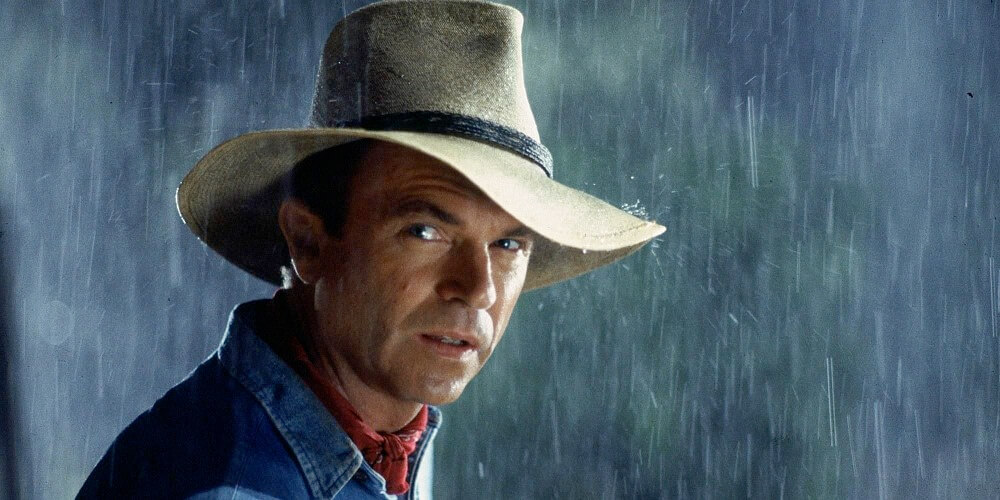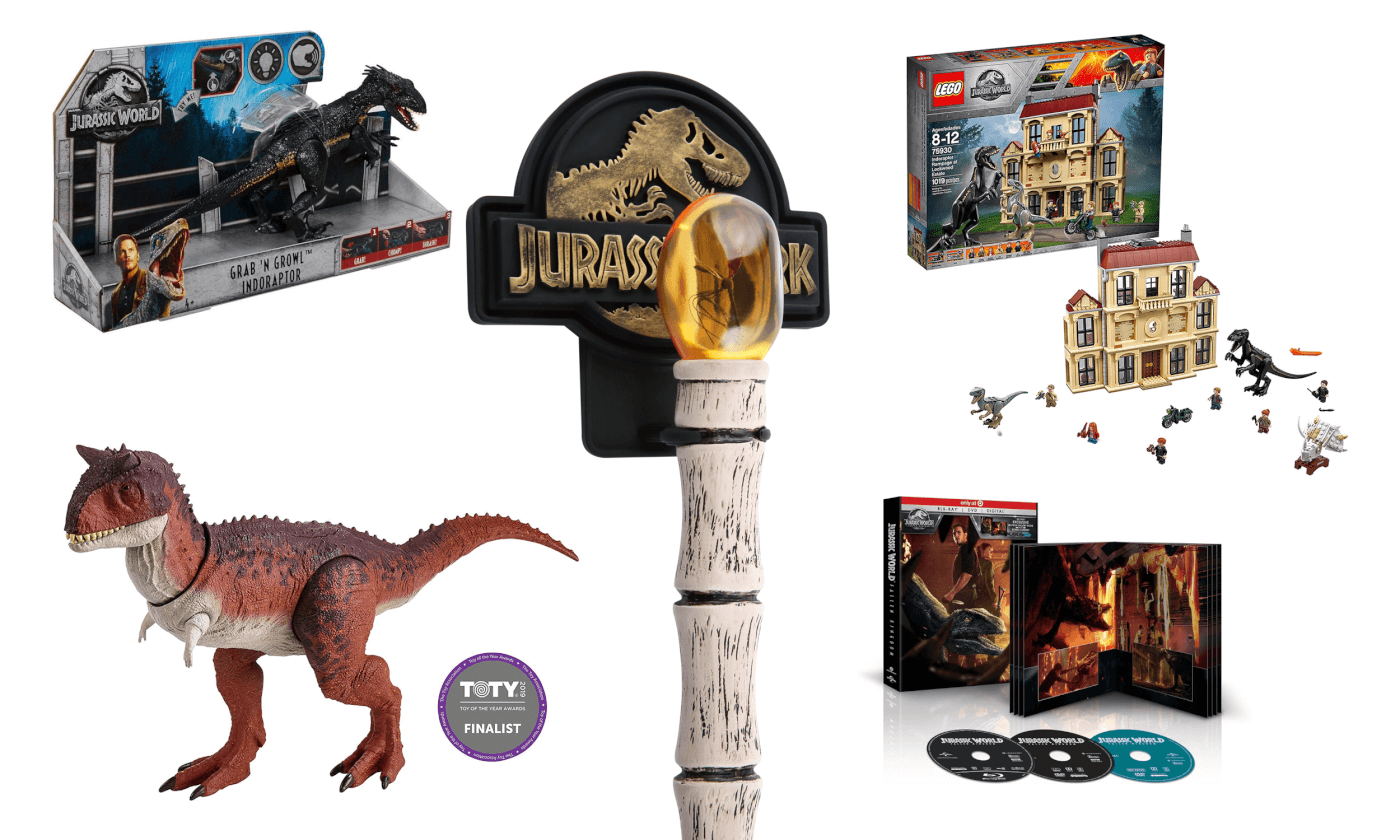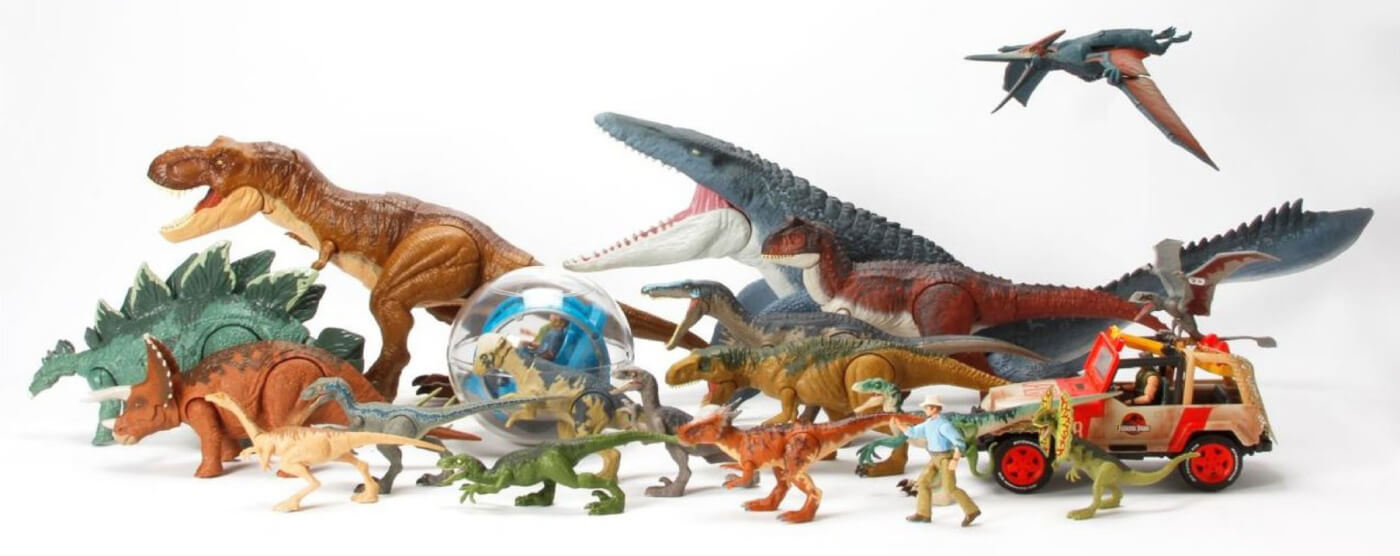“My instinct is to break the classical language of these films a bit and plunge us into a world that feels real and naturalistic. I want to go outside into environments we’ve never seen these animals in. I’m watching a lot of Planet Earth.”
The excitement for a new Jurassic Park movie is a feeling that cannot be shaken by fans, and with Fallen Kingdom still fresh in everyone’s minds, we spoke with Jurassic World 3 director Colin Trevorrow who teased his plans for the upcoming sequel!

Along with those teases we speak about the fandom and the interactivity that Twitter can provide, Colin discusses his writing partner Emily Carmichael and what brought them together as co-writers, we talk the dinosaurs of the franchise, and Colin hints at a wealth of expanded universe content to follow in the future.
Grab your soda from the vending machine and enjoy the read, this is a good one!
When you were first approached for Jurassic Park 4, did you ever think you would be here today in the position you have with Jurassic? What lessons have you learned along the way?
It’s been a ride. Something happens around 40—you’ve lived long enough to look back and identify things about yourself that you realize are embedded pretty deep. I’ve seen patterns in my own work that have helped me understand myself a bit more. All of my films tend to be about a character who gets better, someone who is approaching life in a way that doesn’t represent their best self and then changes dramatically. Darius in Safety Not Guaranteed, Claire in Jurassic World, Susan in The Book of Henry. They’re all characters who have fallen into a pattern that needs to change, and through extraordinary circumstances they find a path to the better versions of themselves. If I’ve learned one lesson, it’s that I share something with the characters and stories I’m attracted to. I want to be the best version of myself, both as a filmmaker and as a person.
How did you meet your new writing partner on the next movie, Emily Carmichael, and what do you believe she will bring to the Jurassic franchise?
I saw a short of Emily’s called “The Hunter and the Swan Discuss Their Meeting”. I just knew immediately that I loved her brain. It’s different. Like a child who went to Harvard but still plays with toys. I brought a script of hers to Steven and we offered her a job writing a script she’s going to direct. She started going to meetings and her career took off. She worked on Pacific Rim 2 with a few other writers, then wrote The Black Hole for Disney on her own. It wasn’t hard to make the case that she should join the family. Her enthusiasm has been pretty infectious. She’s also an excellent Dungeon Master, as my kids will attest.

How involved are you with designing and choosing the dinosaurs, old and new, for each film? What is that process like, and what informs your choices? By design and definition, are there certain key elements you feel set Jurassic dinosaurs apart from others?
I’ve been lucky enough to be able to choose the dinosaurs, but Derek Connolly and JA Bayona and now Emily Carmichael will have each made contributions when it’s all said and done. It’s just a bunch of kids sitting on the floor with their toys. It’s the best part of my job, but also the hardest. You have to keep some great ones in the tank. I love the Carnotaurus and the Baryonyx, but I didn’t want to just see them in the background in Jurassic World. They deserve an entrance. So we put them on the park map, but held the reveal for the second film. The next film is even more fun because the opportunities have really opened up.
You’ve said Jurassic World 3 will have the most accurate dinosaurs yet. What exactly does that mean for a Jurassic film, feathers or otherwise, and what – if any – lessons have you learned from designing dinosaurs on the past two films?
We’re not looking to alter the dinosaurs from the previous movies. Those are established characters to me—they were made with reptilian DNA bridging the gaps in the genome and they have their own identity. But now we’re headed into a world in which the ability to clone a dinosaur is no longer exclusive to Dr. Henry Wu. That leads to innovation, and new opportunities for us to introduce species that represent the full spectrum of our knowledge.

Artwork by Simon Stålenhag – not related to Jurassic World 3
Many assume Jurassic World 3 will feature dinosaurs terrorizing cities and suburbs, and fans are often referring to properties like Godzilla and Planet of the Apes. Are these connections a fair assumption, or do you plan to keep the dinosaurs in the wilder, more untamed landscapes?
I just have no idea what would motivate dinosaurs to terrorize a city. They can’t organize. Right now we’ve got lethal predators in wild areas surrounding cities all over the world. They don’t go pack hunting for humans in urban areas. The world I get excited about is the one where it’s possible that a dinosaur might run out in front of your car on a foggy backroad, or invade your campground looking for food. A world where dinosaur interaction is unlikely but possible—the same way we watch out for bears or sharks. We hunt animals, we traffic them, we herd them, we breed them, we invade their territory and pay the price, but we don’t go to war with them. If that was the case, we’d have lost that war a long time ago.
“Jurassic World 3” or “Jurassic Park 6”? Ultimately a subtitle will replace the numbers, but is there a chance the ‘Park’ branding will return?
Emily and I call it Jurassic Park 6 because it’s fun, and that’s what it is to us. This is the conclusion of a story that began 25 years ago, and I think fans will be fired up when they see how much we’re connecting it to the source material. I know Jurassic World didn’t feel like a sequel in a traditional sense—the title change probably contributed to that—but it was. And so is this.

Will the visual style of Jurassic World 3 be influenced at all by what JA Bayona and Oscar Faura brought to the table?
JA and Oscar shot a beautiful film. If I’m being honest, I’d say they shot such a beautiful film, I’m not even looking to try and match it. They achieved something so gorgeous to look at, my instinct is to break the classical language of these films a bit and plunge us into a world that feels real and naturalistic. I want to go outside into environments we’ve never seen these animals in. I’m watching a lot of Planet Earth.
Jurassic as a brand handles itself quite differently than other mega- franchises out there – from your direct interactions with the community, to the inclusion of fans to create content like Masrani Global and the Dinosaur Protection Group. How important is that to you, and how would you say it helps Jurassic excel?
Our collaboration with the fans was something I first asked for back in 2015, and Universal was really open to it. The team delivered such a great experience with Masrani Global, we gave them a new assignment on Fallen Kingdom, and they crushed that, so we’re really going to be able to expand on that relationship with the third film. It always seemed obvious to me—who knows more about this lore than the fans? Why not just give them the keys and let them drive?

Did any fan and/or critical feedback to Jurassic World help shape your approach to writing Fallen Kingdom?
It did. We definitely took a turn into the darker side of Jurassic Park with that script. The first film was such a bright, colorful pop adventure. With Fallen Kingdom, we were looking to explore the uglier side of humanity and our cruel treatment of living creatures. But I think Bayona kept us from going too far—he embraced the darker elements, but also brought his own sense of playfulness and humor to the proceedings. When we initially wrote the dinosaur auction, we were imagining a dirty, unsavory bunch of animal traffickers huddled in a basement, trading lives for money. He turned it into the sequence you see in the film, which was more like a Sotheby’s auction for the super-wealthy. I think it played much better for kids, and was the right choice when balanced against the poor treatment of the animals we were seeing, which could have become irreparably sad. That’s the benefit of working with another director—you can see different sides of the story through their eyes.

Fan service has become a huge point of debate with larger franchise films. Striking a happy balance seems to be no easy task.
The fans keep my compass pointed in the right direction. Deep fans watch movies differently than the casual viewer, the same way critics watch films differently than the general audience. None of them are wrong. So I do a lot of listening. And every year, more dinosaur fans are born. These movies need to work simultaneously for those kids, for adults who love the old films, and for a diverse global audience—including some who didn’t even have American movies available to them when the first film came out. It’s a delicate balance. I feel like I’ve made a mix of bold choices and safe ones—hopefully once my tenure is done, the fans will look back and feel like I was a careful custodian.
Can you talk about your experience with social media? You directly engage with fans on various subjects. But amongst all that can come a lot of toxic trolling. How do you filter that?
You really can’t filter it. But when you dig deep enough into any fan’s anger, you’re going to find a deep love for the franchise they’re defending. To understand that level of passion—and sometimes furor—requires the same respect and tolerance you give to those with different belief systems than your own. But belief is no excuse for aggression toward those who don’t share your beliefs. It makes me sad to see the current state of the discourse, because the ugly rhetoric we’re throwing at each other is polarizing fandom the same way our politics is dividing us. I hope we find our balance again. I think we can.
It seems you are overseeing the greater Jurassic expanded universe, both in content and canon – is that correct? Can you talk a little about what your involvement is like with that?
Yeah, I’ve been involved since 2015, in collaboration with Steven and Frank. We’ve been working closely with Universal to build out the world and make sure that kids (and adults) who want to dig deeper have someplace to go. We’re really proud of the Mattel and LEGO toys, the console and mobile games from Frontier and Ludia, the VR experience from Felix and Paul, who are just brilliant. We just finished a two-part animated LEGO special that will air on NBC this week. All our creative partners have done awesome work. There’s a lot of things I can’t really talk about, I promise there will be no shortage of new developments in the next few years. But we’re being careful not to oversaturate. Some people just want to go see a dinosaur movie every three years, and that’s fine. Others want dinosaurs all the way down. We’re here for them, too.
Why do you think Jurassic has succeeded in making dinosaur movies work – something that would normally just become another creature feature, into something that is able to thrill and captivate audiences like the Jurassic franchise has done? Do you believe bringing that magic to life gets more difficult with each movie?
I think there’s something humbling about dinosaurs. They’re evidence that we’ve only occupied the earth for a tiny sliver of time. The line that encapsulates the whole series for me is Irrfan Khan’s moment at the beginning of Jurassic World. “Dinosaurs remind us how very small we are, how new.” Humans have only existed for 200,000 years. Dinosaurs were here in one form or another for 170 MILLION years. We act like this planet belongs to us, but we just got here. That’s the story I’m here to tell, and every choice we make is connected to it.
Now that certainly is a lot to digest! While ‘dinosaurs in war’ is an idea that’s been floated around for years, was featured in John Sayles’ Jurassic Park 4 script, and was even hinted at by a main character in Jurassic World, it’s great than Colin continues to shut this idea down in exchange for a much more realistic portrayal of wild animals in the ‘human’ world.
“The world I get excited about is the one where it’s possible that a dinosaur might run out in front of your car on a foggy backroad, or invade your campground looking for food. A world where dinosaur interaction is unlikely but possible—the same way we watch out for bears or sharks.”
Me too Colin, me too. This world would allow for the suspense and thriller aspects of Jurassic Park to return, and is going to allow us to see these dinosaurs interacting with new environments. Environments that aren’t restrained by the jungles of Isla Nublar and Isla Sorna, and instead feel much closer to home.
“My instinct is to break the classical language of these films a bit and plunge us into a world that feels real and naturalistic. I want to go outside into environments we’ve never seen these animals in.”
J.A. Bayona’s Jurassic World: Fallen Kingdom ended with a number of shots showing the dinosaurs reaching cities and locations in and around California, and with the technology used to create these dinosaurs now out in the open world and potentially in the hands of large corporations that don’t have the animals best interests in mind, Jurassic World 3 could show us a much darker side to this story.

We want to say a huge thank you to Colin Trevorrow for this interview and for speaking with us! We hope you enjoyed the read and in case you missed our previous interview with the director back in 2016 you can find that here or listen to the podcast. There’s a surprise guest at the end. And that surprise guest is J.A. Bayona. Sorry to ruin the surprise. But it has been over two years since that interview, so that’s on you.
And be sure to take a listen to our brand new episode where we discuss this interview and go into detail on some of Colin’s answers:
Be sure to follow us on Facebook, Twitter and Instagram for more Jurassic content!






































